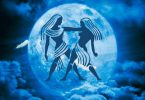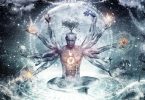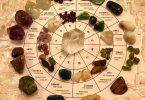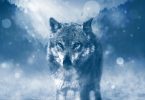There are many goddesses in the world associated with the spring season. However, one goddess who seems to attract the most attention is Ostara.
This may be because its name is very similar to that of Easter and may explain why its fertility totems such as hares and eggs are part of this religious tradition. But perhaps it is also because there is a lot of debate as to whether she actually existed or was even a goddess.
Maybe that information was lost, buried or forgotten, or maybe it was never there in the first place. Nevertheless, Ostara continues to live.
The origins of the goddess of Spring
Ostara’s origins begin in Germany, and she would have brought rebirth, renewal and fertility to the land during the month of April. She was responsible for awakening creativity and supporting the growth of a new life.
It was Ostara who warmed the winds, helped the trees bud and melt the snow. It was Ostara’s presence that helped Mother Earth to be reborn.
In ancient times, when we were more connected to the earth and Mother Earth, spring was a miracle. People watched with admiration as buds bloomed on bare branches and patches of green grass rose through the snow.
Spring was a time of hope. It was a sign that the Earth was healthy, thriving and continuing to be reborn after the harsh winter.
It was a sign that no matter how hard or cold the Earth is, it has the strength and wisdom to be reborn.
Ostara’s Spring Symbols
The Hare
The hare is a special totem for the goddess Ostara. Although there are some variations of the legend, the story goes that she turned an injured bird into a hare that could lay colorful eggs. One day, Ostara got angry with the hare so she threw it skyward forming the constellation of Lepus, but said he could return once a year in the spring to share his special colored eggs.
The hare is also important because it is supposed to be connected to the Moon, which is also a symbol of femininity and fertility. Like the Moon, the nocturnal hare sinks into darkness every day and emerges again at night.
The Moon follows a similar rhythm, reborn night after night, which is why the hare is believed to be related to fertility goddesses like Ostara.
The Egg
The egg is also a symbol associated with Ostara because it is supposed to represent a new life and balance of male and female energy.
The egg contains “all the potential”, full of promise and new life. It symbolizes the rebirth of nature, the fertility of the Earth and all creation.
In many traditions, the egg is a symbol for the whole universe. The “cosmic” egg contains a balance between the male and the female, light and dark, in the egg yolk and egg white. The golden orb of yellow represents the sun god wrapped by the white goddess, a perfect balance, so it is particularly suitable for Ostara and the spring equinox when everything is in balance for a moment, although the underlying energy is that of growth and expansion.
It is thought that people would honor Ostara in April by painting eggs and hanging them from trees, dancing and hunting hares for use in rituals.
Eggs and hares as symbols of spring, fertility and rebirth are observed in many cultures, which is why some argue that these symbols did not necessarily come from Ostara.
The Serpent or the Dragon
In some mythologies, the goddess Ostara is associated with the energy of the snake or dragon. At this time of year, the energy of the snake or Kundalini explodes positively.
Epilogue
Although we can never know the truth about Ostara, this time of year can really remind us of the miracle of planet Earth as it changes season.
It can also remind us of the importance of not forgetting the Inner Goddess and how she can bring creativity and renewal into our lives.
It doesn’t matter what you’ve been through. No matter how hard or cold things are, nothing lasts forever. Just as the Earth goes through the seasons, so do you.
When life has been cold for you, know that the warm spring will return. Know that just as Mother Earth can be reborn, re-created and renewed, too.








